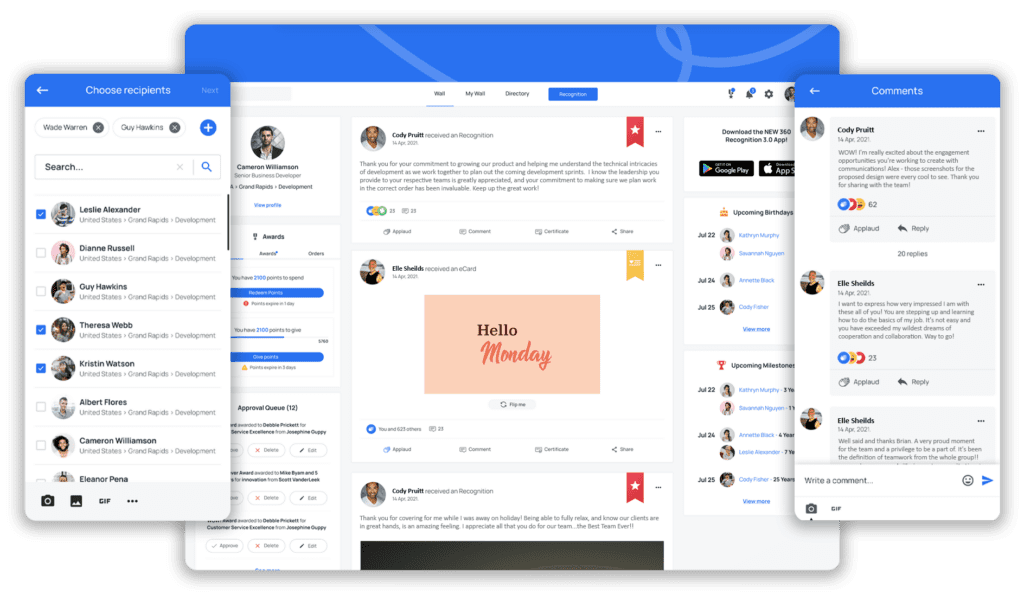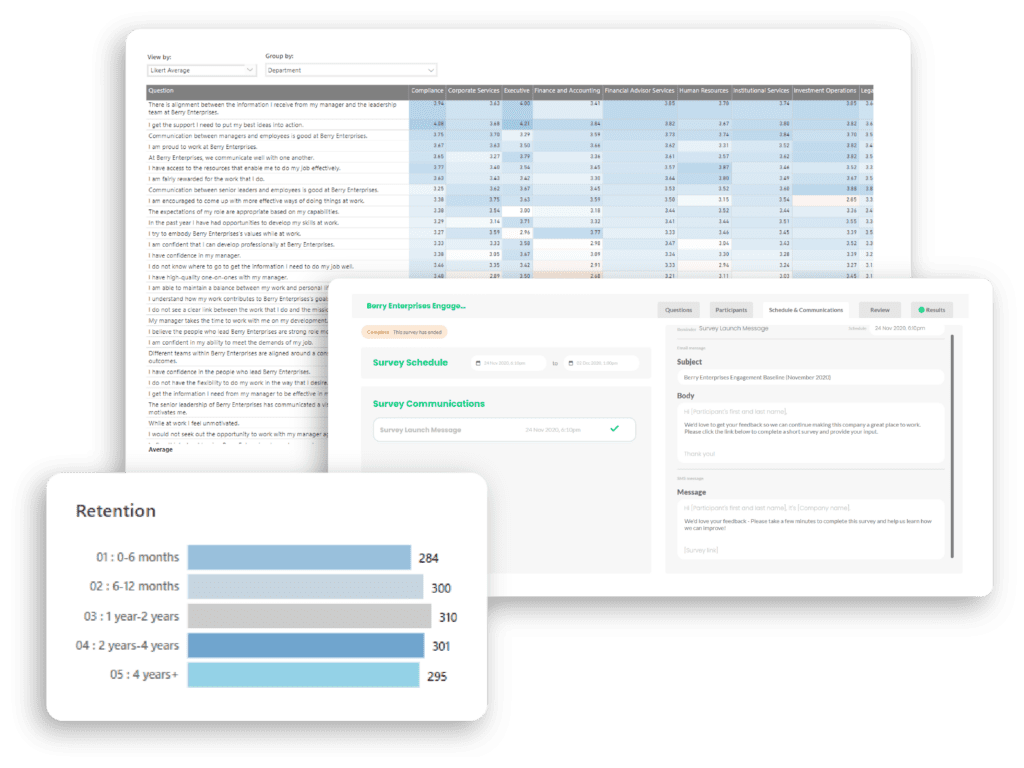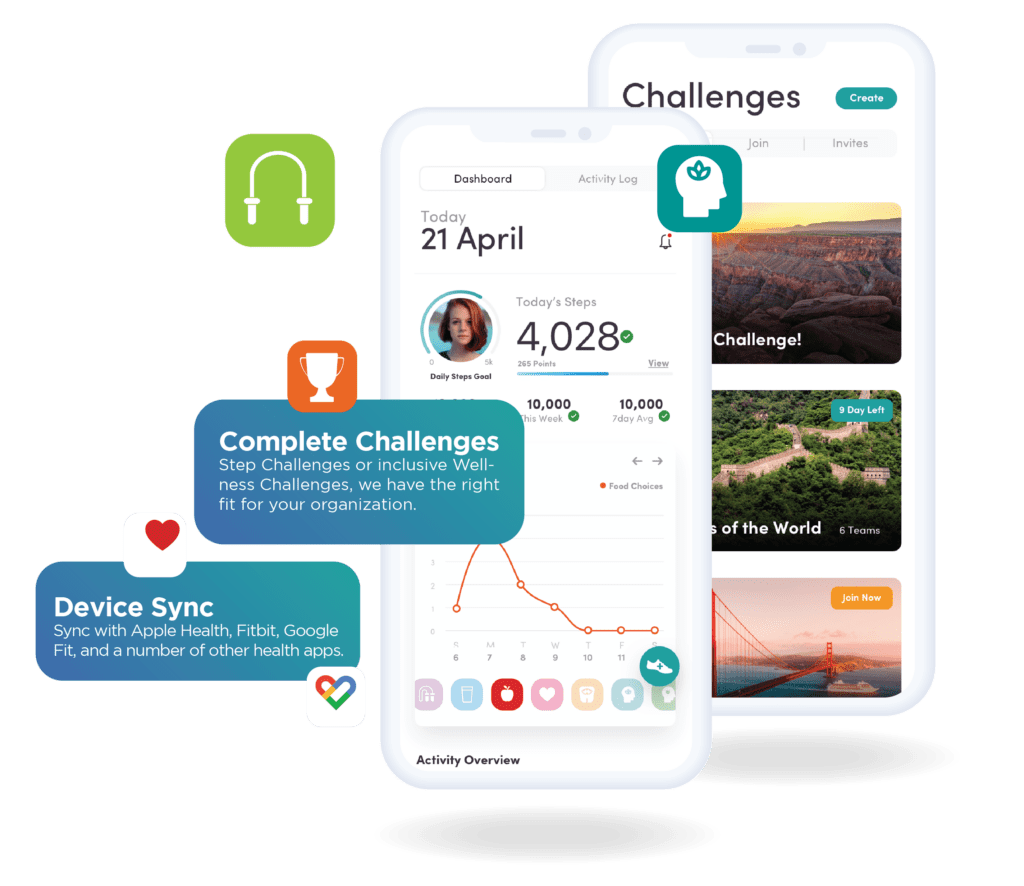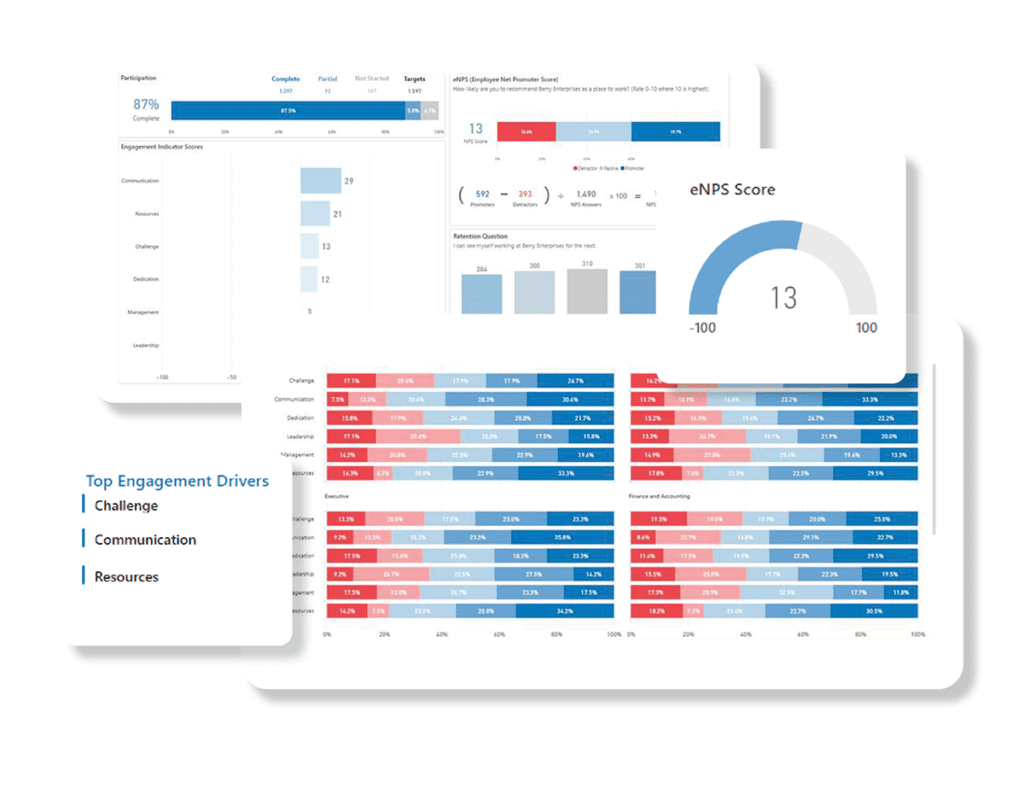October 10, 2023


In today's corporate climate, employee rewards programs are necessary to both retain and attract employees. People want to go where they feel appreciated for the effort they give.
Not only do employee reward systems impact hiring, but they have a massive influence on the entire employee experience. A strong culture of recognition is key to motivating and engaging everyone in your organization.
Let's talk about what research says in regard to employee rewards and what the most effective employee recognition programs look like.
Setting the Stage for Employee Rewards Programs
Employee reward systems continue to gain in popularity, and it's not just because they make people feel good. Research has proven that rewarding employees for their work can provide a number of benefits.


Improved Employee Retention
Celebrating your employee's career achievements has a direct correlation with increased employee retention. People stay an average of two years longer at companies that offer some sort of employee reward system compared to organizations that don't offer a reward program.
Increased Engagement
Receiving recognition makes an employee 20 times more likely to be engaged within the workplace. Employee engagement is a key factor in consumer loyalty and ultimately business growth.
Stronger Community
A truly effective employee recognition program, where employees are praised for their efforts and not just their results, can lead to a 208% increase in the sense of community. In turn, employee loyalty increases and individuals feel encouraged to give their very best.


Types of Employee Recognition
Employee recognition isn't one-size-fits-all. You can vary the way you celebrate your people based on the specific scenario, their preferences, your company culture, and any other factors you want to account for.
Here are a few ways you can implement employee recognition within your organization.
Social Recognition
Social recognition, often known as peer-to-peer recognition, occurs when employees recognize and praise their peers for their efforts and achievements in the workplace.
Many companies leverage software that allows them to facilitate social recognition through public shout-outs, social media style feeds, and digital recognition badges.
Social recognition is a powerful recognition tool that can exponentially increase the amount of praise that all your employees receive on a day-to-day basis.
Service Awards
A recent Gallup poll indicates that 1 out of every 2 employees is actively looking for a new job, and the average person remains at a job for 4.6 years.
Service rewards are typically used to celebrate milestones such as 5, 10, or 20 years of employment.
Because employee tenure has become shorter, we recommend that organizations begin formally celebrating company loyalty on an employee's 1 year anniversary, then 3 year, 5 year, and every 5 year interval after that.
Of course, there's nothing stopping you from also recognizing the in-between anniversaries with a quick email or note of appreciation!
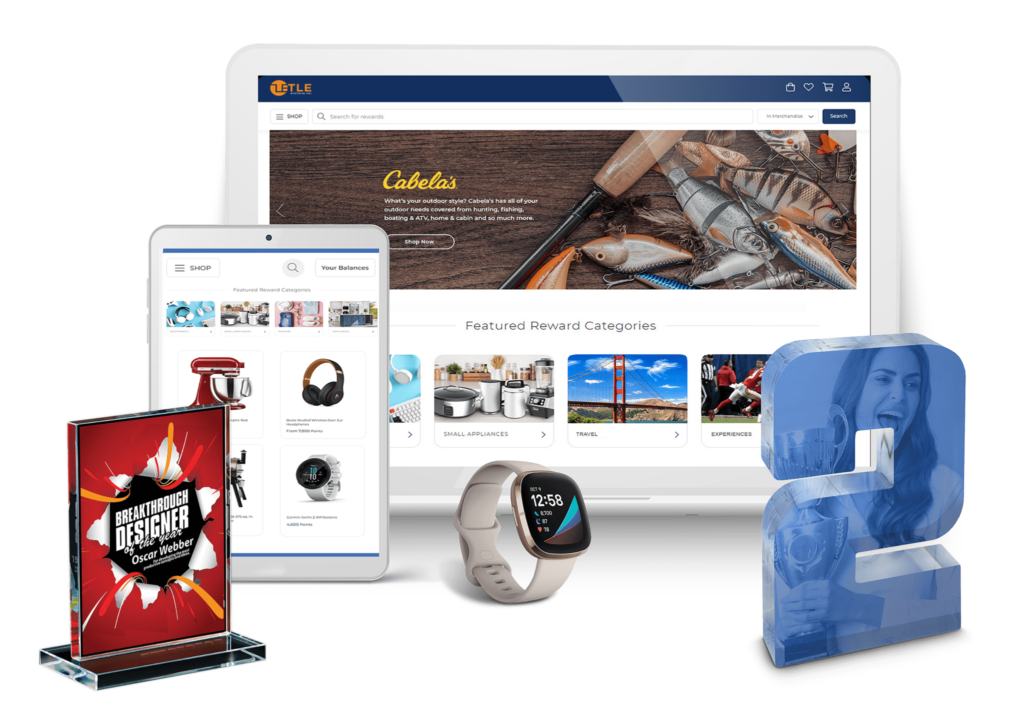

Incentive Rewards
When employees meet certain goals or demonstrate outstanding performance, honor their efforts with incentive rewards.
These employee rewards may include monetary rewards, gift cards, travel vouchers, merchandise, or paid time off. Incentive programs can be used to encourage specific behaviors or actions that reflect your company values.
An incentive program often utilizes a tiered reward system that's tied to virtual employee recognition software. Similar to credit card points, employees may be able to redeem reward points for items of their choosing.
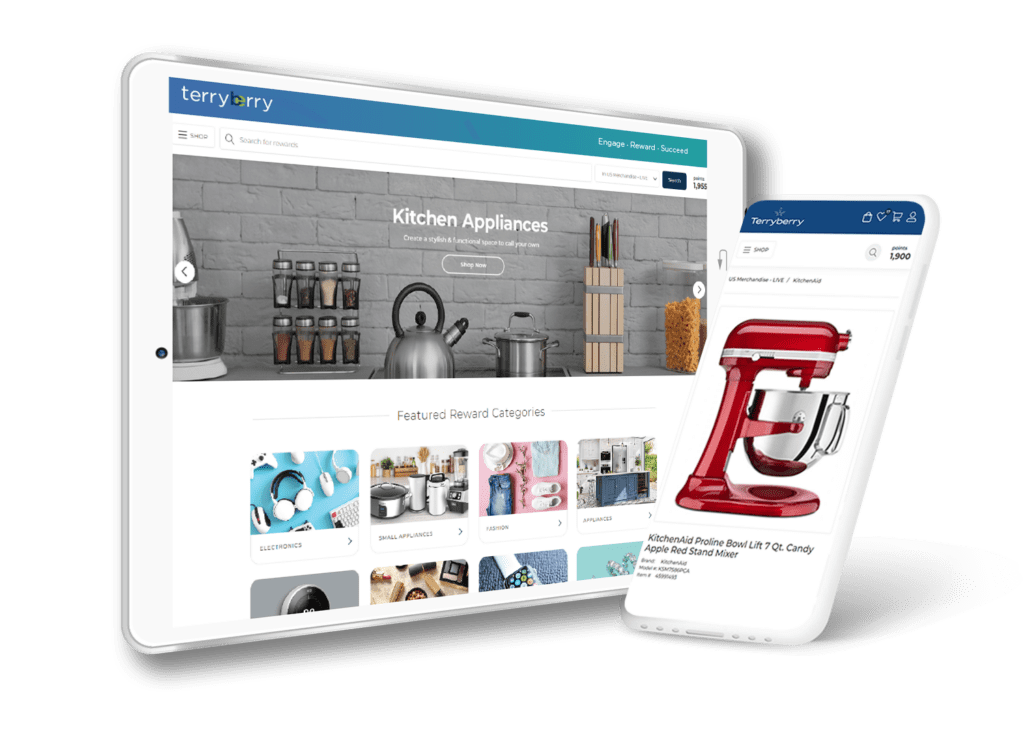

Performance-Based Bonuses
Most often used in sales organizations, performance-based bonuses are typically tied to specific, measurable goals and are often part of a structured incentive program.
This financial rewards program celebrates when employees demonstrate outstanding performance and meet or achieve targets that have been set for them.
Informal Recognition
Frequent informal recognition is indicative of a company culture where individuals are celebrated for their efforts and achievements, both big and small.
It's an easy way to motivate employees and the work they're putting in to help the company succeed.
Informal recognition is typically free or low-cost, so all it requires is a little bit of your time and effort. The most effective employee recognition programs include a mixture of both formal and informal recognition.


Verbal praise
It takes just a few seconds to motivate employees with verbal praise, but this small action can have a large impact on employee engagement.
Infuse this action into your daily routine to instill confidence in your employees and motivate team members.
The best verbal praise is specific; instead of saying, 'good job on that presentation,' try saying, 'I appreciate the way you took the lead on getting those graphics from the design team. Your initiative made this project go much more smoothly.'
Team meeting shoutouts
Make recognition a consistent part of your company culture by incorporating shoutouts into every team meeting, whether it's with an individual department or the entire company.
You can highlight employee achievements, point out how someone handled a difficult situation, or celebrate an entire team that is currently exceeding their goals.
Spending a few minutes to publicly celebrate your people helps cultivate a more positive work environment and boost employee morale.
Handwritten notes
The extra effort that goes into writing a note or card makes this an especially meaningful way to celebrate your employees and colleagues.
You'll often find handwritten notes pinned to someone's wall months after it was sent. Grab a box of notecards and set a goal to write one card a week or even one a day-- it usually takes less than a minute to jot something down.
Looking for some ideas on what you can include in a handwritten note? Check out these employee appreciation messages that celebrate teamwork, honor great performance, and voice sincere appreciation for those you work with.
Personal celebrations
Most employees want to feel like their company values them as more than a worker. Part of a strong company culture and healthy work-life balance is celebrating your employees for more than what they do from 9-5.
Don't forget to recognize personal milestones that your employees are comfortable sharing about, such as birthdays, family additions, and personal accomplishments.
6 Tips for Designing Effective Employee Reward Systems


An effective employee reward system is designed with intentionality. It's better to invest time in the beginning to build something that both current and future employees are excited to use.
According to Gallup, strategic recognition fulfills employee's expectations for recognition, is embedded within a company's culture, and is both authentic and equitable. Keep these characteristics in mind as you design your incentive program.
1. Ask for Feedback
To go the long haul, an employee reward system should be designed with employee feedback in mind. Use an employee survey to discern what employees are really looking for in their rewards program and to measure the impact of your program once it's implemented.
2. Be Inclusive
An employee rewards program should be accessible to people at every level and in every department. Inclusivity goes beyond offering a variety of rewards (though we do recommend and encourage that!).
An inclusive employee reward system considers the different cultures and abilities of each individual in the organization.
A Gallup poll revealed that only 26% of employees feel like they receive similar amounts of recognition as their colleagues who exhibit equal performance, and diverse talent often experiences less frequent and less authentic recognition.
The real kicker? High quality rewards and recognition are more likely to lead to feelings of belonging for Black and Hispanic employees than for White employees. This emphasizes the importance of monitoring your employee reward system to ensure it's inclusive of everyone within your organization.


3. Vary Your Rewards With Common Incentives
The strength of an organization often lies in employees' differences. Every individual offers a unique set of skills and talents-- but this also means they have varied interests. Provide a mixture of rewards in order to appeal to all employees.
Some ideas include:
- special privileges such as reserved parking
- wellness incentives
- travel vouchers
- gift cards
- branded merchandise
- awards and trophies
- public recognition in meetings or on social media
- additional time off
- cash bonuses
The key to varying your rewards is giving employees a say in their own rewards. You may choose to offer several options that all have a similar monetary value at different levels of your reward system.
4. Encourage Peer Recognition
Employee recognition is about more than performance management, and it's important that praise isn't only coming from those in leadership. A thriving employee reward system includes peer-to-peer recognition as a component.
But peer recognition doesn't just happen. Companies need to first create an environment that encourages the act of celebrating peers and colleagues. Be sure that your reward system not only allows for peer recognition but makes it easy.
If you're using a recognition platform, there's probably an option for social recognition to occur; most rewards programs are designed to encourage this. If you're opting for a different method of recognition, consider how you can simplify the process.
Connect different teams through a recognition channel on Slack or schedule time for peer recognition during staff meetings.
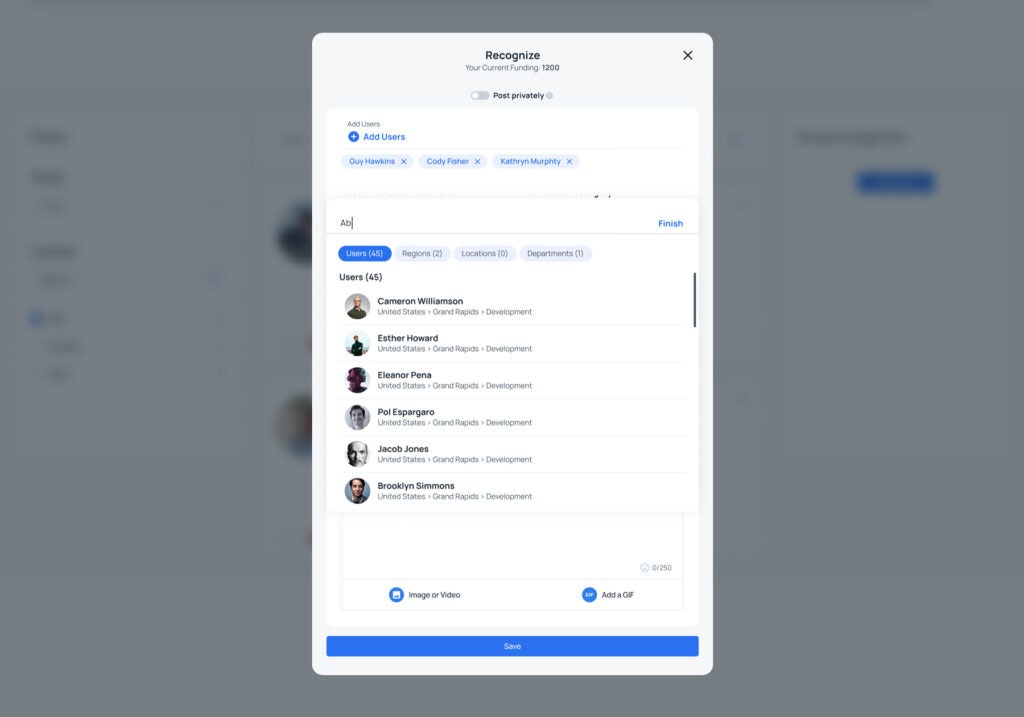

5. Promote your Rewards Program
A new rewards program benefits from a targeted launch campaign that generates excitement and awareness. Send periodic emails to inform employees about the program's benefits and what they can expect once it launches.
Display posters that highlight the new program. Ask leadership to endorse the program and take initiative in modeling employee recognition.
Once a rewards program is fully launched, take steps to prevent it from becoming stale and unused. Variety isn't just the spice of life- it's also critical to a successful employee rewards program. You can encourage consistent implementation of your program by keeping employee recognition engaging.
Do this by:
- Encouraging leaders to implement different forms of recognition.
- Regularly introducing new rewards and incentives.
- Creating seasonal or holiday themes for your rewards.
- Gamifying your employee rewards programs.
- Offering team-based or collaborative rewards.
6. Use Technology Wisely
Many companies are now choosing to utilize software as part of their employee rewards program. If you're introducing a new social recognition software, you may need to spend some time teaching employees how to navigate the program.
Even a short how-to video is likely enough to help employees feel comfortable in utilizing the software. You don't want to require too much of their time, but you don't want to leave people to figure things out completely on their own and become frustrated in the process.
During onboarding, spend a few minutes going over the platform as you highlight the role of recognition in your company culture.
Recognition software is just one technology-driven way to celebrate employees. When it comes to virtually recognizing others, consider all the ways technology can simplify or enhance the process.
For example, a team leader may block out time to write a batch of recognition emails for everyone they supervise, scheduling them to be sent throughout the week.
Social media posts can highlight employees who have gone out of their way to create an incredible customer experience. Companies that don't use recognition software can utilize other methods, such as a designated Slack channel, to celebrate employee achievements.
Employee Recognition Trends in 2023 and Beyond
Recognizing and rewarding employees is far from a trend-- it's the backbone of a strong company culture where employee engagement is high and people want to stay long-term.
However, as technology advances and priorities shift, so do trends in recognition. Many organizations are now interested in recognition platforms that are designed to support both the emotional and physical well-being of employees by making recognition exciting and equitable.
Here are a few recent trends we've noticed in the recognition sphere.
Health and Wellness Programs
Employers have become increasingly aware of the need to support employee wellbeing within the workplace.
Health and wellness programs can help attract new talent, improve employee productivity, and foster a positive work environment. So much so, 80% of medium to large businesses within the US offer some sort of corporate wellness program.
Employee recognition and wellbeing most often merge in the form of wellness challenges and incentives. These challenges are sometimes company-wide competitions, where employees contend for the highest step count or greatest number of active minutes in a week.
They may also be goal-based, encouraging employees to meditate for so many minutes a day or drink an adequate amount of water.
Gamified and Points-Based Recognition
The gamification of recognition leverages the human desire for competition, achievement, and rewards to encourage participation in the employee recognition process.
Some popular gamification elements include:
- points and/or badges: employees can earn points and/or badges when they give and receive recognition through the rewards platform. Badges may create a sense of achievement, and points may be redeemed for employee rewards.
- leaderboards: leaderboards may rank employees based on their participation and engagement in the recognition program
- challenges: recognition challenges encourage employees to provide a certain amount of recognition over a specified time frame. Meeting the goal may unlock new rewards or levels in the rewards platform.
- donation options: some employee reward programs allow employees to convert their points into money that's donated to a charity of their choice
DEI Focus
Diversity, Equity, and Inclusion (DEI) focus reflects the growing awareness that workplaces should be both inclusive and equitable in every aspect of the employee experience.
Black and Hispanic employees are less likely than White employees to feel like their recognition experience is equitable. Not only do they receive less recognition, the recognition they are given is often perceived as less authentic.
An employee rewards program with a DEI focus prioritizes recognition practices that celebrate achievements for all employees, regardless of their race, gender, ethnicity, or other characteristics.
One way to determine whether recognition is being provided equitably is to gather feedback through surveys, team meetings, and individual conversations, where employees can openly share their recognition experience.


Personalized Employee Rewards
Employee rewards and recognition are most effective when they appeal to individual people. In research completed by Gallup and Workhuman, 5 pillars of strategic recognition were identified.
One of the pillars is Personalized. When you're deciding how to reward employees, it's important to remember that one size doesn't fit all.
Incentive programs can't actually incentivize if there's nothing certain employees want to work toward. Find out what your employees are interested in receiving and let that guide you as you design your reward system.
While one person may appreciate a personalized reward such as tickets to a sports event for a team they support, another may prefer a wellness-focused reward like a FitBit or gym membership.


Tangible Rewards
In some instances, you may prefer to provide a physical reward for a job well done. Terryberry offers personalized rewards such as custom trophies and custom award rings, which are ideal for celebrating someone's tenure with your organization.
We also offer customizable rewards options include a curated collection of thousands of award options like electronics, jewelry, tools, and more. Many recognition platforms utilize similar incentive rewards, where earned points can be redeemed for tangible rewards.


Intangible Rewards
You don't have to necessarily provide your employees with physical items or even cash rewards to express your appreciation for their effort. An employee reward can also come in other forms, such as additional paid time off or preferred parking.
Hybrid and Remote Work
The pandemic shifted the way that many people work-- and that change is here to stay. As of May 2023, 29% of employees were exclusively remote and 52% were hybrid, meaning only 19% of employees work fully in-office.
Successful employee rewards programs are designed with this trend in mind, allowing for the bulk of employee recognition to occur digitally. An online rewards platform means that all employees can participate, regardless of where they work on a daily basis.


Tuition Reimbursement Programs
Tuition reimbursement programs are growing in popularity as companies recognize the importance of investing in employees' continuing education and professional development.
These programs may provide financial support for:
- higher education
- courses
- workshops
- conferences
- certifications
As a result of the tuition reimbursement program, employees gather new skills and knowledge that improve their performance. Employee motivation may also increase as individuals feel like they are a valued member of the team.
How Do I Set Up a Rewards Program for Employees?
Launching an employee reward and recognition program is a strategic initiative that can increase employee engagement, help employees feel appreciated, and create a more positive work environment.


6 Steps to Design and Launch a Program
Rome wasn't built in a day, and a successful employee reward system won't be either. Doing the legwork before you launch your recognition system makes it more likely for it to have a large impact on your organization and stand the test of time.
1. Assess your current needs and budget
Any incentive program should be designed to encourage your organization's values and areas of need. Maybe there's a lack of communication between teams working at different locations or you want to place a stronger emphasis on creating a quality customer experience. Take all of these ideas into account when you're building your employee reward system.
You also need to consider how much you're willing to invest in your program. Expect employees to redeem rewards and ensure you can afford the rewards you are offering.
Effective employee rewards programs are a critical component of the company budget, not something that's added as an afterthought.
When you're considering how much to allot for your program, consider the cost of an employee recognition platform plan, salary requirements of anyone who will be overseeing the program, and the rewards you're providing to employees.


2. Gather feedback
Employee feedback should be at the heart of your incentive program. Send out a survey to discover how employees feel about the current recognition climate and what changes they'd like to see in the future. You might ask--
- How satisfied are you with our current recognition system?
- How would you prefer to be recognized and rewarded?
- Can you share a time you received memorable recognition?
- How would you like to participate in peer-to-peer recognition with your colleagues?
- Do you feel like there is enough transparency in our current rewards platform?
- What employee rewards would you be most interested in receiving? Can you share both tangible and intangible preferences?

3. Set goals
Effective employee rewards programs align with the core values of your company and encourage employee behaviors that are conducive to a strong company culture.
Consider how you can use your employee recognition platform to benefit everyone involved. The goals that you set should align with the needs you determined in step 1. Common goals include--
- Improve communication between employees.
- Increase employee motivation.
- Improve the employee experience to increase retention.
- Create a more positive work culture.
- Encourage professional development.
4. Design the program
This is when you really get to have some fun! If you're opting for a reward system using a platform, you may work with your provider to set it up or spend some time learning the new software.
If you're utilizing an in-house digital employee reward system, you'll put systems in place to encourage recognition, such as creating a designated Slack channel or scheduling weekly emails to remind managers to recognize members of their team.
5. Communicate about the program
It's time to get crystal clear with employees about what they can expect in your new employee reward system. Provide any necessary training if you're using a new platform or unfamiliar system. Most importantly, hype up the benefits that employees can anticipate from the reward system.


6. Rollout
Time to implement the new employee reward system so everyone in your organization can revel in the rewards and recognition it provides.
Pitfalls to Avoid
Ideally, introducing a new employee recognition platform is smooth sailing. And while you can't remove every bump in the road, you can anticipate and help prevent a few challenges along the way.


Resistance to Change
Some people may be uninterested in learning how to use a new employee recognition platform or spending time engaging in peer-to-peer recognition.
If you anticipate a little pushback, consider a few individuals you might enlist to be champions of change. These employees can help promote the new reward platform and address concerns or hesitations that their colleagues have.
Unsustainability in the Way You Reward Employees
Your employee recognition program can be as big as you want it to be, but it doesn't have to be a huge production. In fact, 72% of employees who have great recognition experiences say that they're often praised for the small things.
As you develop your employee reward program, focus on making employee recognition and rewards sustainable long-term. It's better to start small and scale your program instead of finding you've overwhelmed employees with too much or can only offer incredible employee rewards for a year before you have to majorly cut back.
Not Including Everyone In Leadership
A culture of recognition starts at the top. Thriving rewards programs have buy-in from everyone from the CEO down to each assistant manager. Those in upper management should aim to recognize employees at every level, not just their direct reports.
Hearing that you've done well from your manager is encouraging, but hearing the owner of a company say that you've made a difference is enough to completely alter the employee experience for almost anyone.


Lack of Timeliness
The appeal of a gamified employee reward program isn't the only similarity that adults share with children. The are also likely to be much more interested in rewards that are given in a timely manner. When employee rewards and recognition are provided weeks or months after a win, employees may begin to lose steam.
Encourage management to provide recognition immediately when it is merited; leaders should strive to praise employees often. In addition, consider how you can reward employees on a frequent basis.
Using an employee recognition platform, especially one that gamifies the process with points, provides an immediate 'win' when employees are recognized. You may also implement strategies to provide rewards on a monthly or quarterly basis instead of making employee rewards an annual thing.
Not Measuring Impact
You feel it in your heart-- you've created an effective reward system that's sure to increase the frequency of meaningful recognition and improve employee satisfaction. But, as we all know, the heart can be a fickle thing.
You can't know if your employee reward system is truly making a difference unless you analyze various sources of data related to its implementation.
Measuring the Impact of Employee Recognition
Analyzing the metrics related to your employee rewards program helps you determine which aspects are working and where you need to make changes to better support your employees.
After investing time and effort in the design and implementation of the program, it can be tempting to look at your rewards platform through rose-colored glasses.
Using metrics to measure the impact of the reward program helps you identify aspects that aren't working well and provides clear, actionable steps you can take to improve the program and better engage employees.
5 Metrics to Measure Impact
While some of this information will need to be gathered from people within your organization, such as team leaders and human resources, you may also be able to examine data that your employee recognition platform provides.
Many digital recognition programs provide a dashboard with an overview of data informing you how the platform is being utilized, as well as customizable reports.
1. Employee satisfaction surveys
The need for feedback doesn't end when you're designing your employee reward system; it's also necessary to ensure maximum participation. Gather feedback on a quarterly basis to discern what employees like about the rewards platform and what tweaks need to be made.
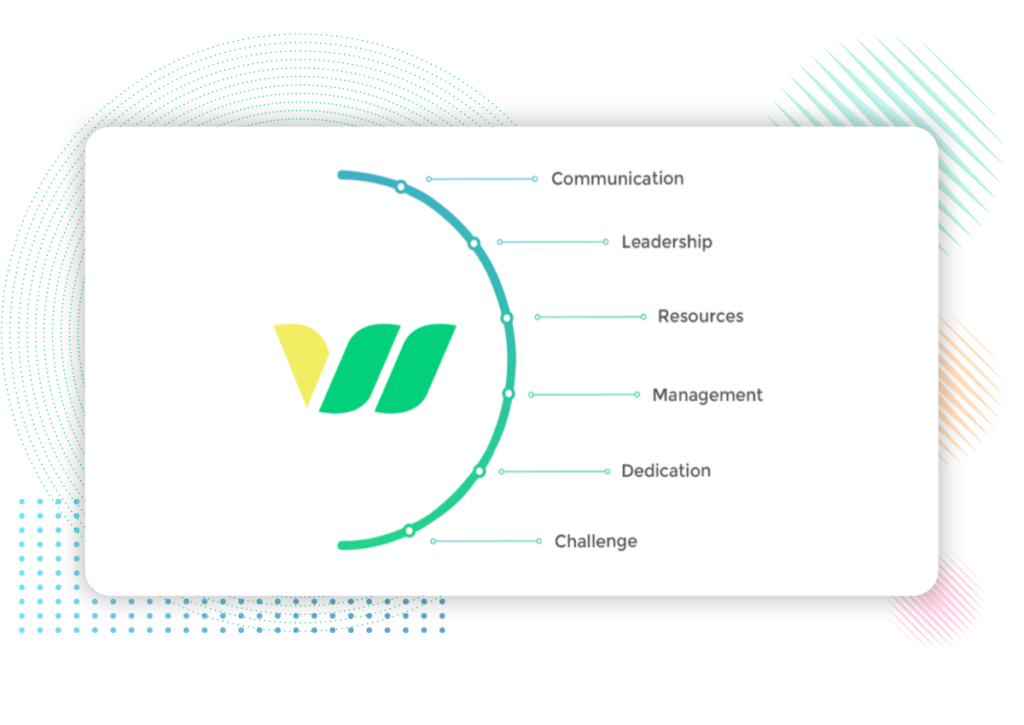

2. Turnover rate
One of the major goals of employee recognition and rewards is to increase satisfaction and employee retention. Fewer people want to leave a workplace where they feel supported and valued as an individual. A low or decreased turnover rate is one sign of a successful rewards program.
3. Productivity
Like lower turnover rates, employee productivity can also be tied to the impact of your employee rewards program. People who feel seen and cared about in the workplace are more motivated to stay on task and give their best.
You may assess productivity by tracking KPIs such as sales revenue or project completion times, or by comparing your company's productivity measurements to performance in previous quarters.
4. Employee engagement
In 2021, employee engagement dropped for the first time in a decade. In 2022, engagement saw another decrease. Studies have shown that people feel connected within the workplace when they:
- feel cared about at work
- have opportunities to grow
- feel a connection to the purpose of the company
These factors that contribute to engagement can all be encouraged through employee rewards. To assess whether your recognition platform is contributing to employee engagement, try sending quarterly surveys that measure engagement using a Likert scale. You may use statements such as:
- I feel like I am part of a team.
- I have a good relationship with my manager and other members of leadership.
- I feel like I am provided the opportunity to use my talents at work.
- I would recommend my company as a good place to work.
5. Peer to peer recognition activity
While not all peer to peer recognition activity is going to be measurable, you can track social recognition that happens within your employee recognition platform. Use this information to analyze how often employees are celebrating and interacting with one another.


The Value of Recognizing Employee Success
In conclusion, employee reward systems are a proven way to:
- increase employee performance and engagement
- engage employees in frequent peer-to-peer recognition
- drive employee recruitment and retention
- reinforce your company values and instill a positive company culture
Ready to implement your own recognition program? We're here to help. Schedule a demo with our team to discover how Terryberry can transform the culture of your workplace.

